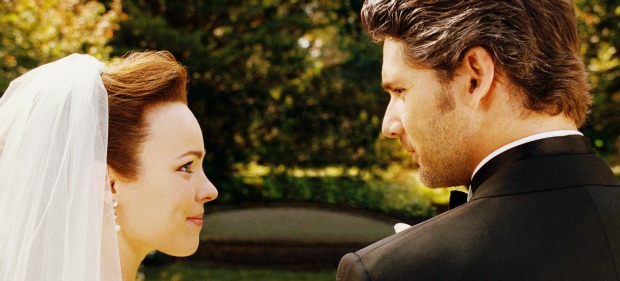The Time Traveler’s Wife
Where reality and the bond between human beings can be stronger than any other forces, The Time-Traveler's Wife emerges as a collection of the burdens of a couple wrestling with an incomprehensible ailment that itself is never really questioned.
Plot summary
A romantic drama about a Chicago librarian with a gene that causes him to involuntarily time travel, and the complications it creates for his marriage.

Based on the best-selling novel by Audrey Niffenegger, The Time Traveler’s Wife is a love story involving Henry, a Chicago librarian, and Clare, an emerging artist. To add to the story Henry has a very rare genetic disorder, chrono-impairment, which annoyingly causes him to involuntarily time-travel (often at the most inappropriate of times) and appear naked at different stages of the narrative. Whilst the concept of being able to time-travel may appear to have its positives, for Henry and his beloved Clare the positives are few and far between as they face many pressures as a result of his condition.
Henry has no control over where or what time he is travelling to or for how long each excursion will last. Being cast naked into a new and different situation each time often causes his life to be in danger, be it from a caged animal, nature or his fellow man, and prevents him from ever truly feeling settled.
Clare, on the other hand, has to try and continue her own life whilst Henry’s presence with her is never guaranteed or sustained. Often she is left feeling lonely and in need of a physical constant in her life that Henry, despite her love for him, cannot provide because of his condition. Clare’s desire is to have Henry’s child and it is this that seems to cause the greatest unrest between the couple aside from his extra-curricular trips.
Director Robert Schwentke negotiates the potential difficulties surrounding certain scenes and also genre-based issues through a combination of humour and reliance on the unconditional love of Clare for Henry. In what could be a very awkward scene where a naked Bana hiding behind a bush encounters a six-year-old Clare for the first time, Schwentke relies upon a light piece of dialogue competently executed by Bana and his young co-star to skirt the obvious and strange issues surrounding this scene.
To be able to fully adapt and move with the narrative, as Producer Dede Gardner says, “there has to be a little leap of faith where you just accept Henry’s condition and what happens to him.” However this is not so much “a little leap of faith” but a giant leap where the science fiction element of the whole story needs suppressing in order to focus on the story as a whole.
The idea that time-travel is merely the catalyst for the love-story is for me where the film falls-down. There are too many instances where fundamental questions about Henry’s condition are variable, and inconsistent like when older versions of himself appear alongside present ones.
Although very well-acted and occasionally, unintentionally albeit, thought-provoking, The Time Traveler’s Wife in its insistence on being almost solely a love-story with a touch of the science fiction, struggles to develop into something more. Where reality and the bond between human beings can be stronger than any other forces, The Time-Traveler’s Wife emerges as a collection of the burdens of a couple wrestling with an incomprehensible ailment that itself is never really questioned.











COMMENTS